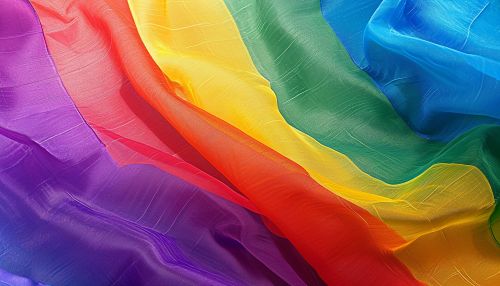LGBTQ+
History
The history of the LGBTQ+ movement is rich and complex, with roots in the early 20th century and significant strides made in the late 20th and early 21st centuries. The movement's origins can be traced back to the formation of the Society for Human Rights in Chicago in 1924, which was the first documented gay rights organization in the United States. The movement gained momentum in the 1960s with the advent of the homophile movement, which sought to challenge societal norms and advocate for the rights of gay men and women.


The Stonewall riots in 1969 marked a significant turning point in the movement, as it sparked the formation of various activist groups and led to the first gay pride parades. The 1970s saw the emergence of the gay liberation movement, which sought to redefine societal attitudes towards homosexuality. The movement also began to include and advocate for the rights of transgender individuals during this time.
The 1980s and 1990s were marked by the AIDS crisis, which had a profound impact on the LGBTQ+ community. This period also saw significant legal and political battles, including the fight for marriage equality. The 21st century has seen continued progress in LGBTQ+ rights, with the legalization of same-sex marriage in many countries and increased visibility and acceptance of transgender and non-binary individuals.
Identity and Terminology
The term LGBTQ+ is an acronym that stands for Lesbian, Gay, Bisexual, Transgender, and Queer, with the plus sign indicating the inclusion of other sexual orientations and gender identities. The terminology used to describe sexual orientation and gender identity has evolved over time, reflecting changing societal attitudes and understandings.
The term homosexuality was first used in the late 19th century, and was initially pathologized and considered a mental illness. The term gay, originally used to refer to feelings of being "carefree", began to be used in reference to homosexuality in the mid-20th century. The term lesbian is derived from the name of the Greek island of Lesbos, home to the ancient poet Sappho who wrote about her love for women.
The term bisexuality refers to sexual attraction to both men and women, and has been recognized as a distinct sexual orientation since the early 20th century. The term transgender was first used in the 1960s to describe individuals whose gender identity differs from the sex they were assigned at birth.
The term queer was originally used pejoratively against those who were perceived to transgress gender norms. However, it has been reclaimed by the LGBTQ+ community and is now used as an umbrella term to encompass a variety of sexual orientations and gender identities.
Rights and Legal Recognition
The rights and legal recognition of LGBTQ+ individuals vary greatly around the world. Many countries have made significant strides in recognizing and protecting the rights of LGBTQ+ individuals, while others continue to criminalize homosexuality and deny basic human rights to this community.
In many Western countries, significant legal advancements have been made in recent years. These include the decriminalization of homosexuality, the recognition of same-sex relationships, the right to change legal gender, and the introduction of laws to protect against discrimination based on sexual orientation and gender identity.
However, in many parts of the world, LGBTQ+ individuals continue to face significant legal and societal challenges. Homosexuality is still criminalized in over 70 countries, and in some, it is punishable by death. Transgender individuals also face significant legal barriers in many countries, including laws that prevent them from changing their legal gender or that criminalize gender non-conformity.
Social and Cultural Impact
The LGBTQ+ community has had a significant impact on society and culture, influencing everything from art and music to politics and law. The community has been at the forefront of numerous social and political movements, and has played a key role in advancing social justice and equality.
The community's impact can be seen in the arts, where LGBTQ+ artists and creators have made significant contributions. The community has also had a profound impact on popular culture, with LGBTQ+ characters and themes increasingly represented in film, television, and literature.
The LGBTQ+ community has also played a significant role in politics, with LGBTQ+ individuals serving in public office and advocating for policy changes. The community has been instrumental in advancing civil rights and social justice, advocating for everything from marriage equality to protections against discrimination.
